- Canhabaque: 4 days, 3 nights in Koh Lanta mode
- Prepare the trip well
- How to get to Canhabaque?
- Where to stay in Canhabaque?
- Day 1: Arrival in Canhabaque
- Day 2: Crossing the island to Ancanho
- Day 3: Ancanho and its paradise island!
- The continuation of the adventure in Casamance in Senegal
- Reminder of some tips
Canhabaque: 4 days, 3 nights in Koh Lanta mode
The adventure begins now!
Canhabaque (pronounced Caniabaque) one of the most traditional and least developed islands of the Bijagos archipelago.This island is also called Roxa (pronounced Rocha) by the locals.
It has not been open to tourists (and so much the better) like the other islands, so there are no restaurants, no hotel, no shop. There is also no toilet or shower.
Legend has it that there were cannibals on the island which cut this island off from tourism but it is a legend they are like you and me. No problem at this level!
Clearly, the beauty of the wild landscapes is worth the detour!This island was the most memorable experience of this trip.
Prepare the trip well
- Buying groceries : easy to carry. We opted for bread (6 baguettes), canned tuna (6 boxes), kiris, dry biscuits (to offer), rice (2kg), cube broths.The whole thing had to be 4000-5000 FCFA
- Have a lifestraw or gourd with filter and better, there are wells in all the villages of the island but it is not recommended to drink the water directly. Impossible to buy on the spot. And carrying water could overload you.
How to get to Canhabaque?
This island is difficult to access because it is very poorly served!
The public canoe that costs 1000 FCFA passes once a week departure from Bubaque on Tuesday and return on Friday.
It will be necessary to confirm the days and times with Georges –> see the main article Road trip Guinea Bissau in 10 days – Bijagos Islands
Alternatively, you can take a private canoe. You have to pay for gasoline which was at the time about 60,000 FCFA or 90 €. If you are several and pressed for time this can be a good solution.
Where to stay in Canhabaque?
As we told you no hotels, camp etc on the island.
The best is to rent tents with Georges for 5000 FCFA per day.
For a location, the beaches are a good place even if you have to pay attention to the tide that goes down and up strongly.
Day 1: Arrival in Canhabaque
The departure is according to the days and the tides (see with georges as mentioned in the main article Road trip Guinea Bissau in 10 days – Bijagos Islands )
On our side, we embarked in Bubaque around 17:30 being on site a good hour before.
In the canoe, it’s a parade!
We had the right to 2 motorcycles, chickens, about forty passengers who drink the local wine (the pias in brick), endless boxes.
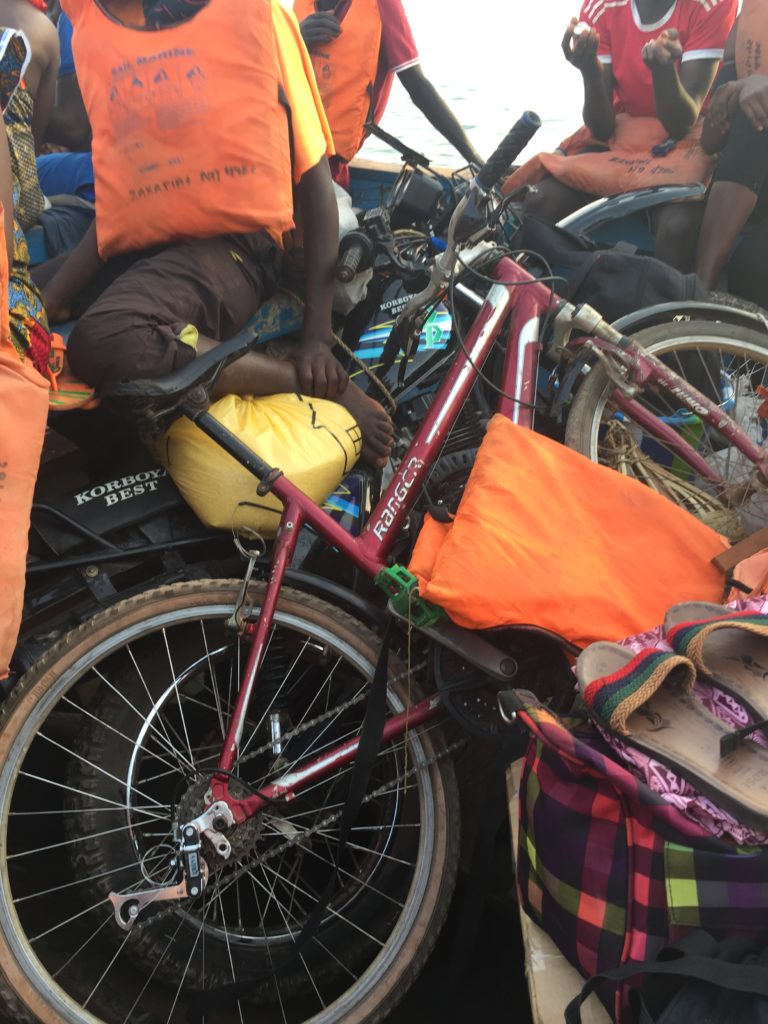
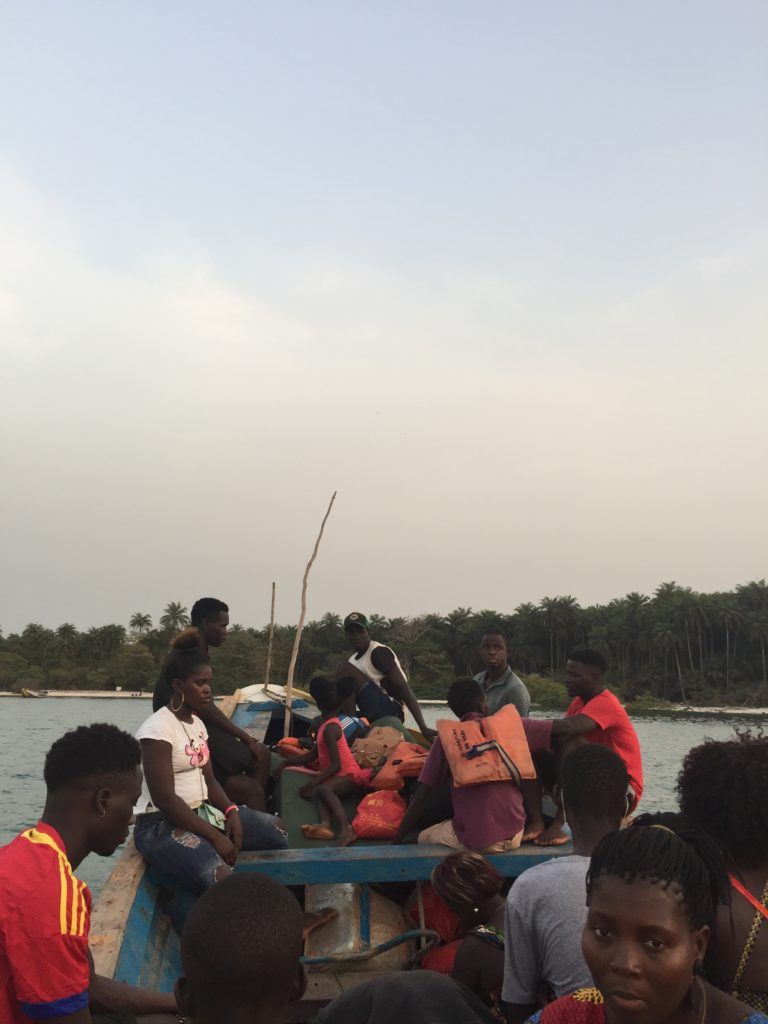
The canoe makes several stops: Ancahno, Biaig (not on the name) and Ndena

The crossing takes about 2 hours!
We did not have a guide as the trails are signposted on Maps.me.
On the other hand, George had a cousin (Augustine) who went to Canhabachus. So we followed him to sleep in their village.
Arrival on Canhabaque
So we stop in Ndena.
We arrive around 7:30 pm and then it is the beginning of the walk in the night:
- From port to Ndena: 20/30 minutes
- Ndena in Meneque (village of Georges and Augustin) in the south of the island: 1h30
Some tips on the Meneque language:
Monoi chero = helloMene
= ca va
With this you will entertain the many children of the villages for hoursOn
the spot, Augustin brings us a mattress and we sleep royally in our tent in the garden of a house in the village.


However, before going to bed, we were able to enjoy a party in the school in the center of the village.
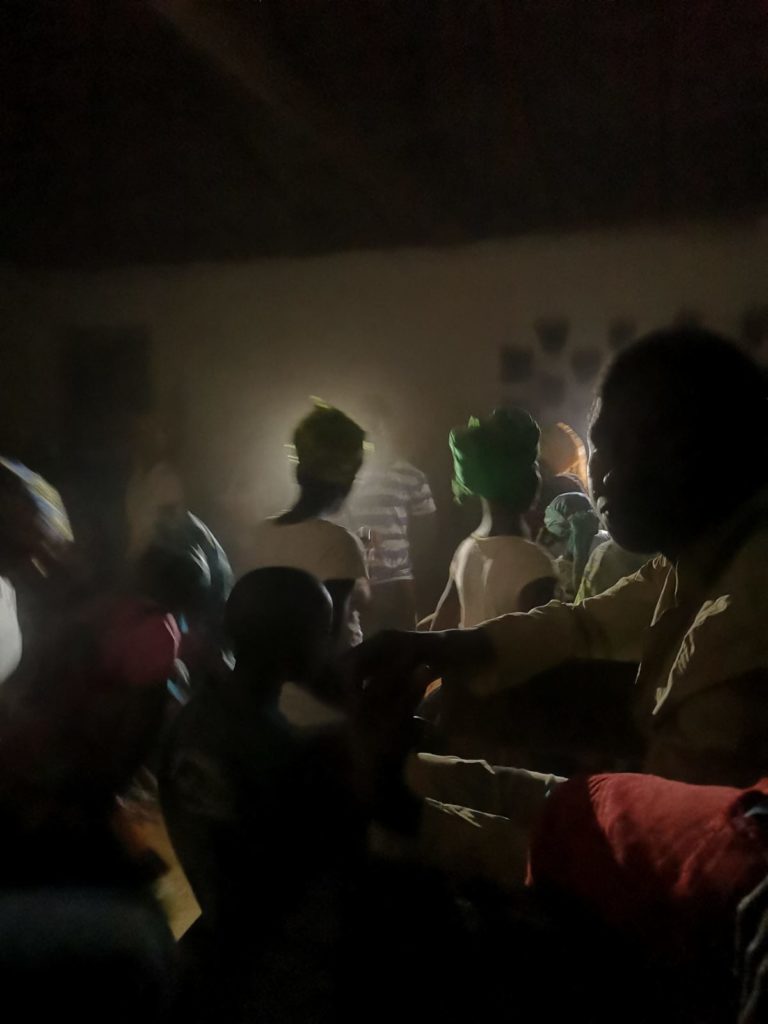
Day 2: Crossing the island to Ancanho
Several options are possible:
- Go to the southwest (it seems that it is beautiful). It is possible to go there by crossing the whole island or passing when the tide is low with a guide by shortcuts.
- Go to Ancanho directly and chill to the beach
- Discover the rest of the east (less advisable)
So we chose to stay in the morning in Meneque to enjoy the beach and to eat in the village for 2000 FCFA they cook you a good braised chicken with the rice we had brought.
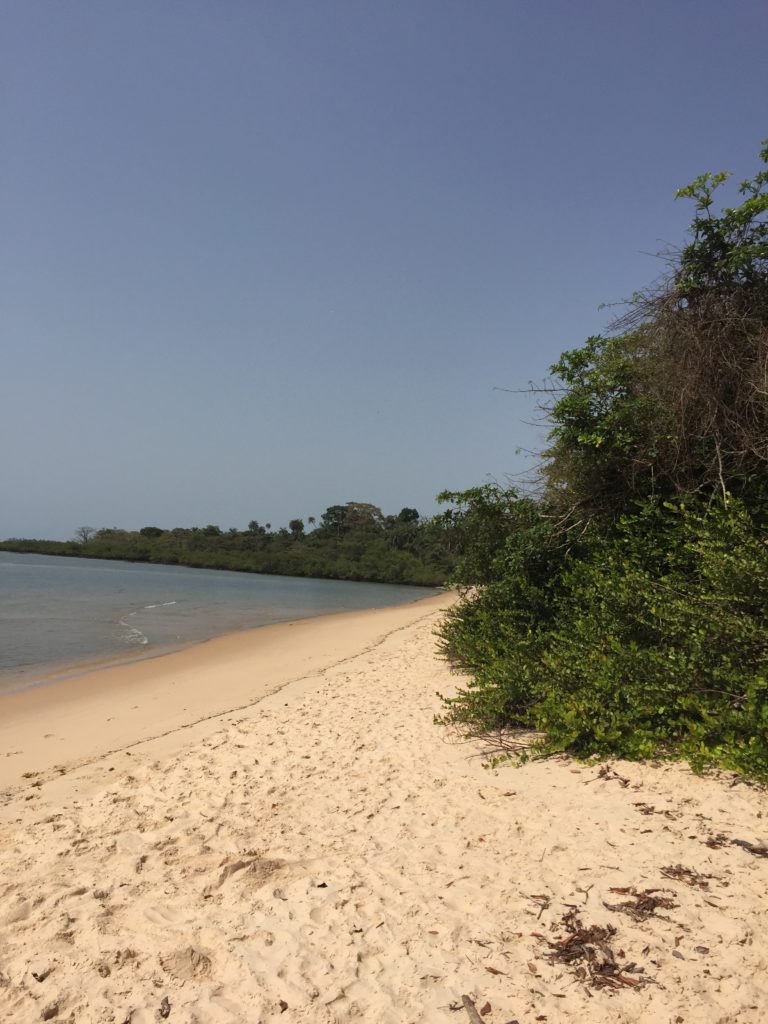
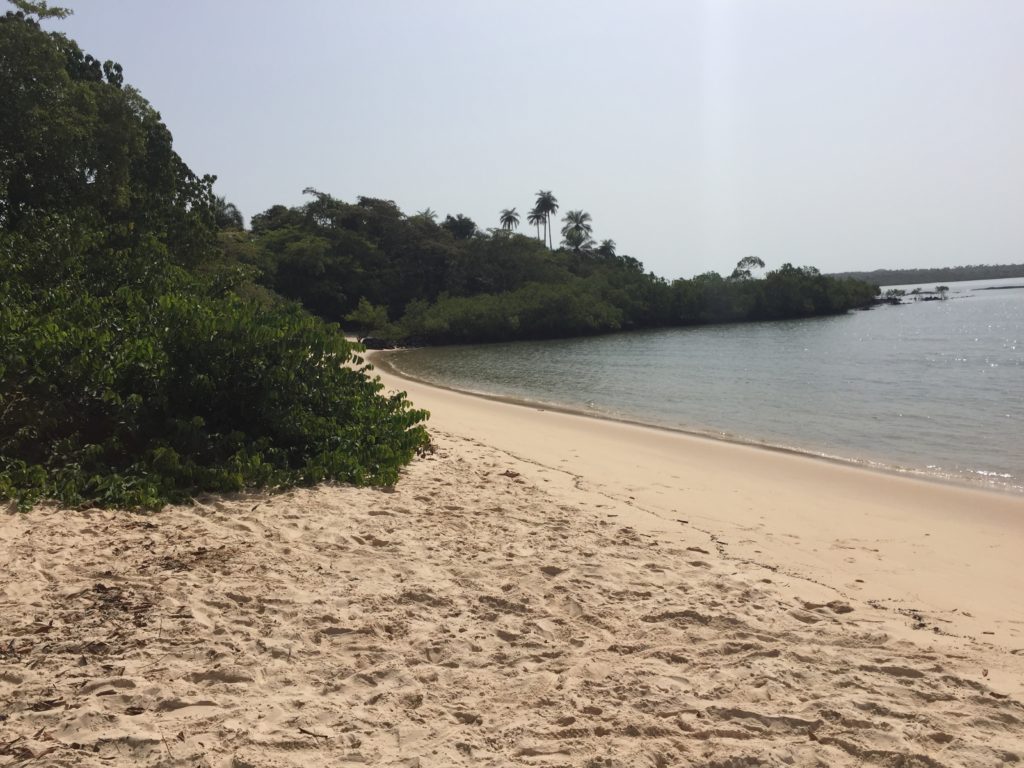
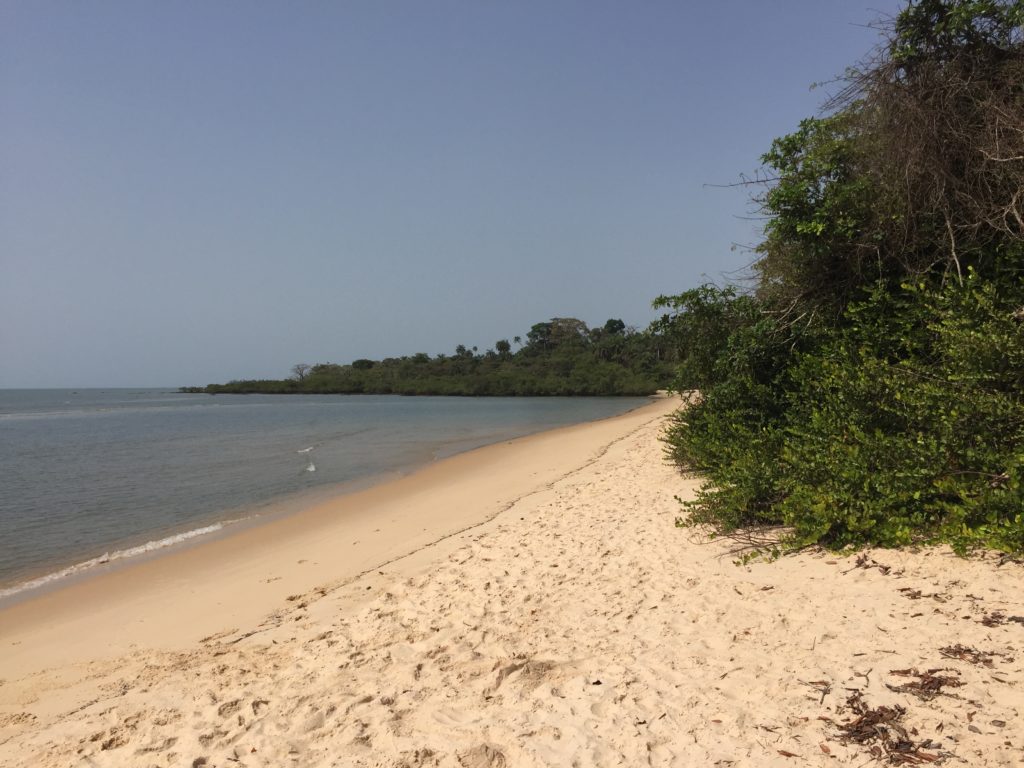

Thus, we were ready for our journey with Maps.me to travel the island from end to end.
We gave pennies (4000 FCFA) and food for the village to Augustin because they had accompanied us to his native village.
Note: in general a guide is 6000-7000 / day if you take one officially.
It’s 2:30 pm and before leaving for 20 km of walking, we filled our 2 Lifestraw and an empty plastic bottle to fill the Lifestraw. You can fill the water in the wells of the villages and in Ndena there is a water point with taps it is an opportunity to fill the water stocks!
When in doubt, ask the islanders for your itinerary by saying the name of your destination. After, Maps.me will help you 80% then for the paths not indicated, you have to follow the main paths and find your way with the map
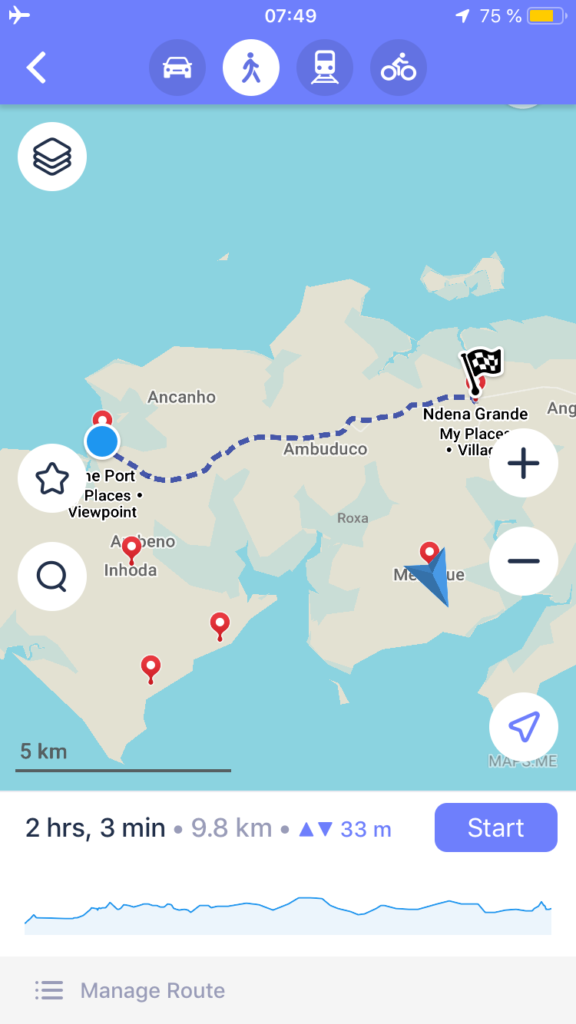
However, even if the road is beautiful, it is very hot we were in April and it was 30-35 degrees with the weight of business, food and tent it is quite sporty. To make our itinerary, we need a minimum of physical condition and resilience.
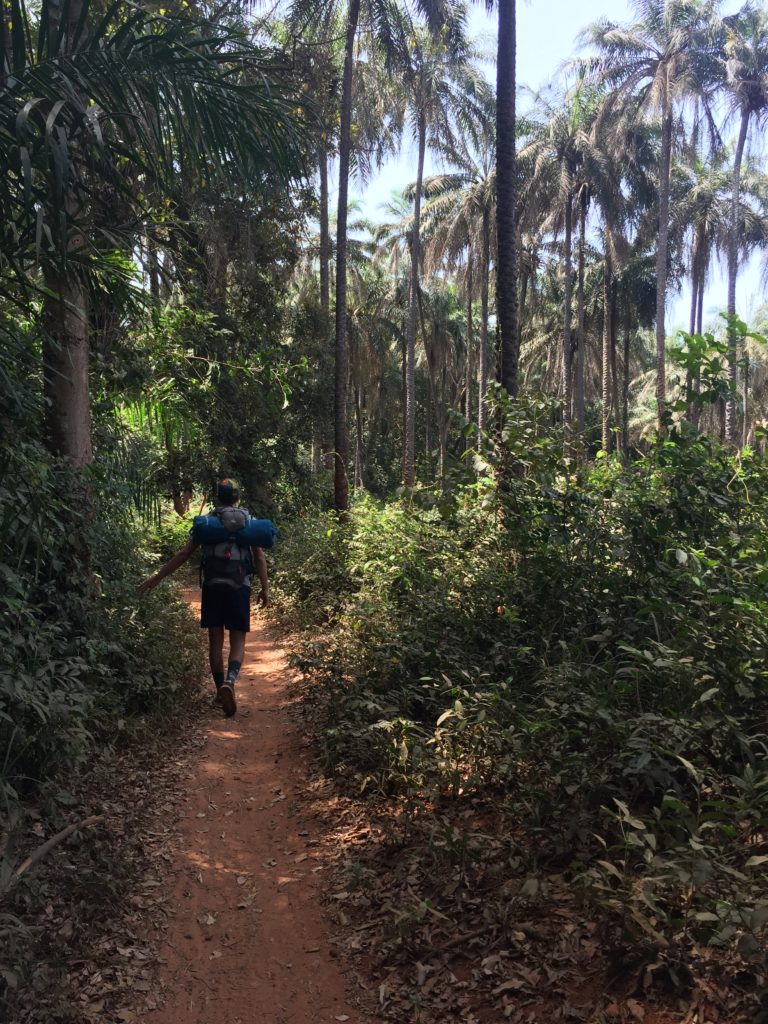
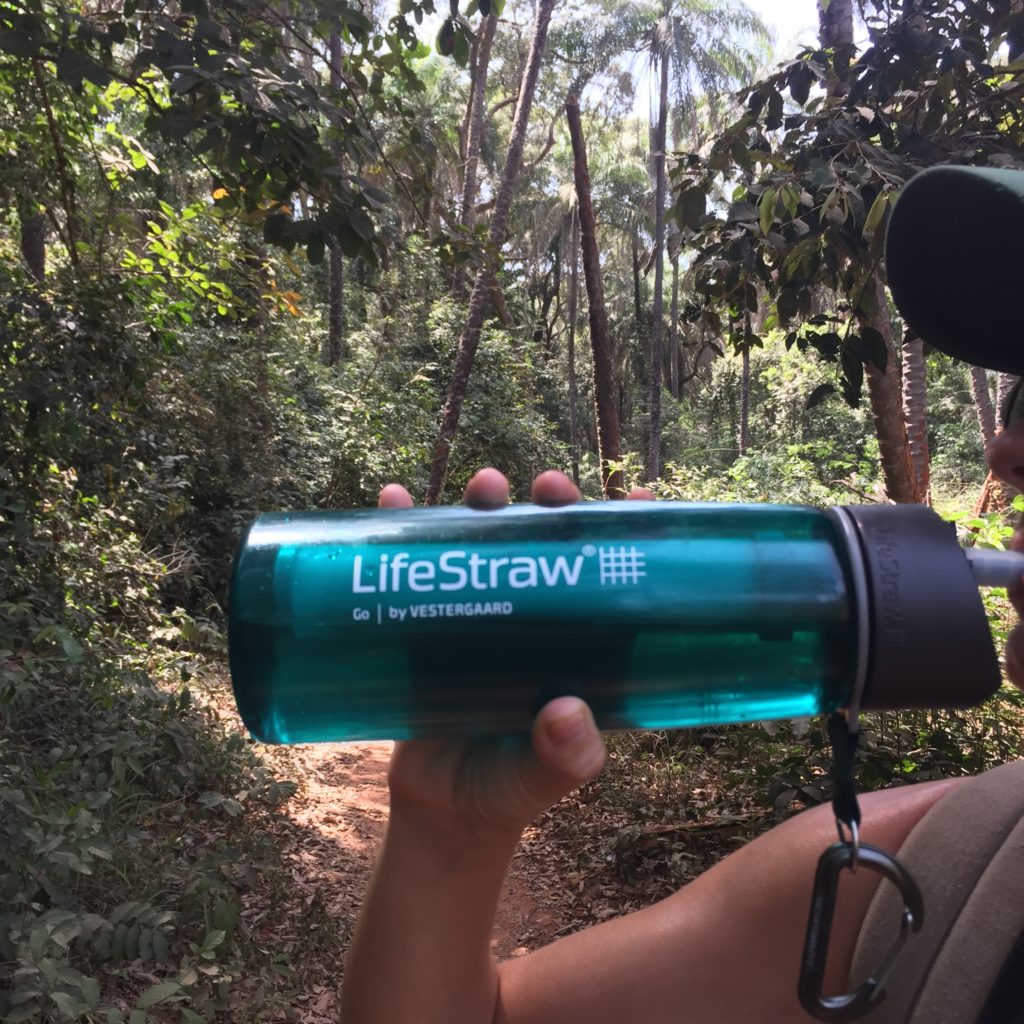
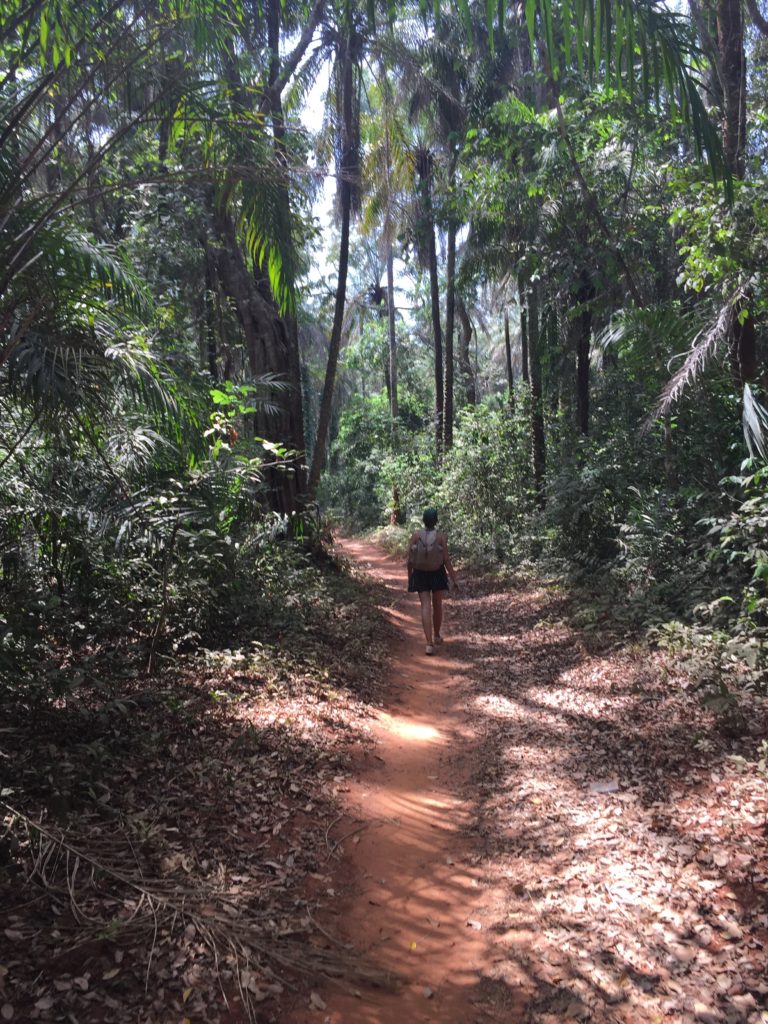
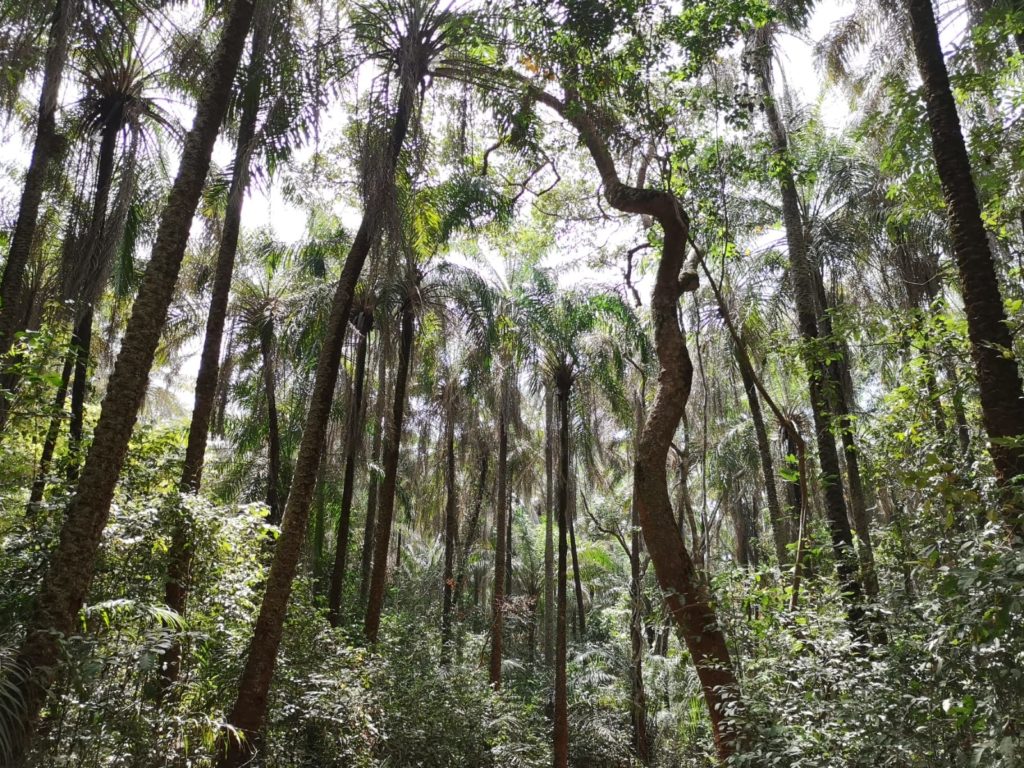
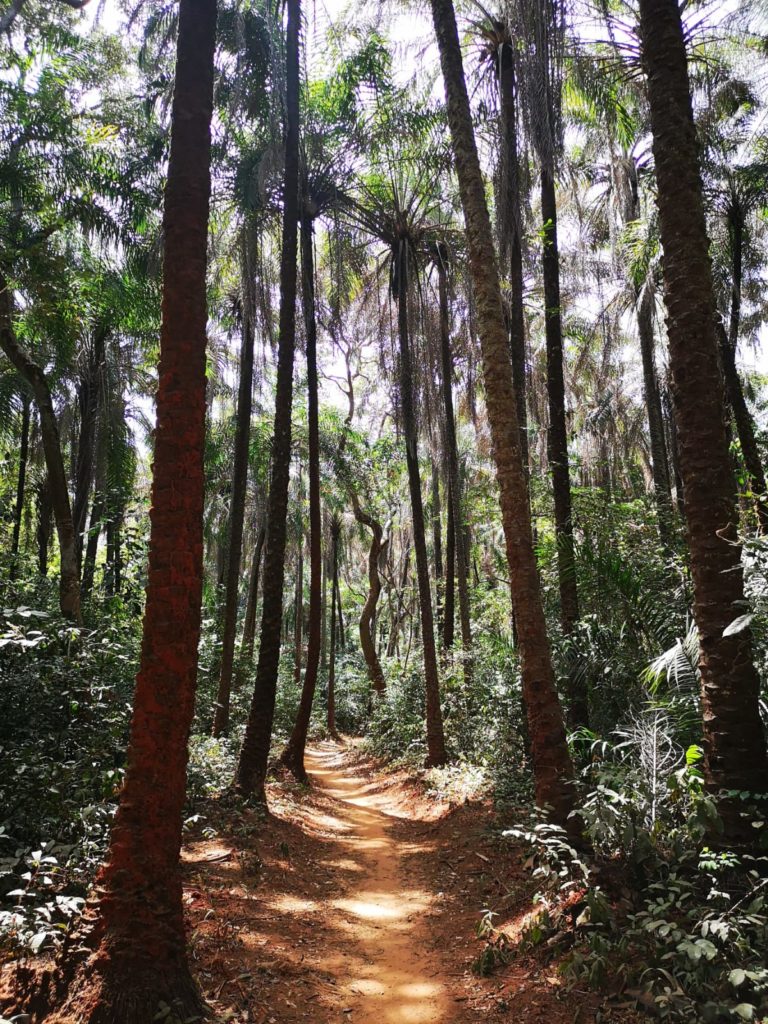
The village of Biné
We arrive tired in Biné, the village before Ancanho.
The experience was complicated!
We arrive in the village and we see a pig eating a live hen… The stage is set.
Then a horde of children and women surround us to ask for medicine, money, gifts, clothes.
We had nothing to give but above all as a matter of principle we avoid giving as much as possible to preserve healthy relationships with tourists. Otherwise, the locals see the whites as wallets and will be aggressive if you give nothing or if you give 2000 FCFA and the person before gives 5000 FCFA.
It is even Georges who advises to give things only if you want to or if you want to share a meal etc. We must not arrive with large savior hooves.
The evil children of Biné
It is necessary to be careful, children can become aggressive because excited at the sight of tourists and angry if they do not give pennies or sweets to 40 children.
If this happens to you and they become distressing go get an adult saying that the children “assault” you if this is the case of course.
On our side this is what happened, they started throwing shells etc and managing 40 children unleashed is very difficult because we do not want to raise the tone too much.
Women from the village yelled at them at our request and they did not follow us anymore.
Arrival in Ancanho
We arrive exhausted from our day of walking.
In the very nice village of Ancanho, a young man from the village takes us to the beach which is hard to find about 15-20 minutes more.
We give him 300 FCFA because he took the time to accompany us kindly.
Night begins to fall. We climb the tent on the beach not too much at the edge because of the tide and we spend a very quiet night
Day 3: Ancanho and its paradise island!
We rise quietly on our camp.
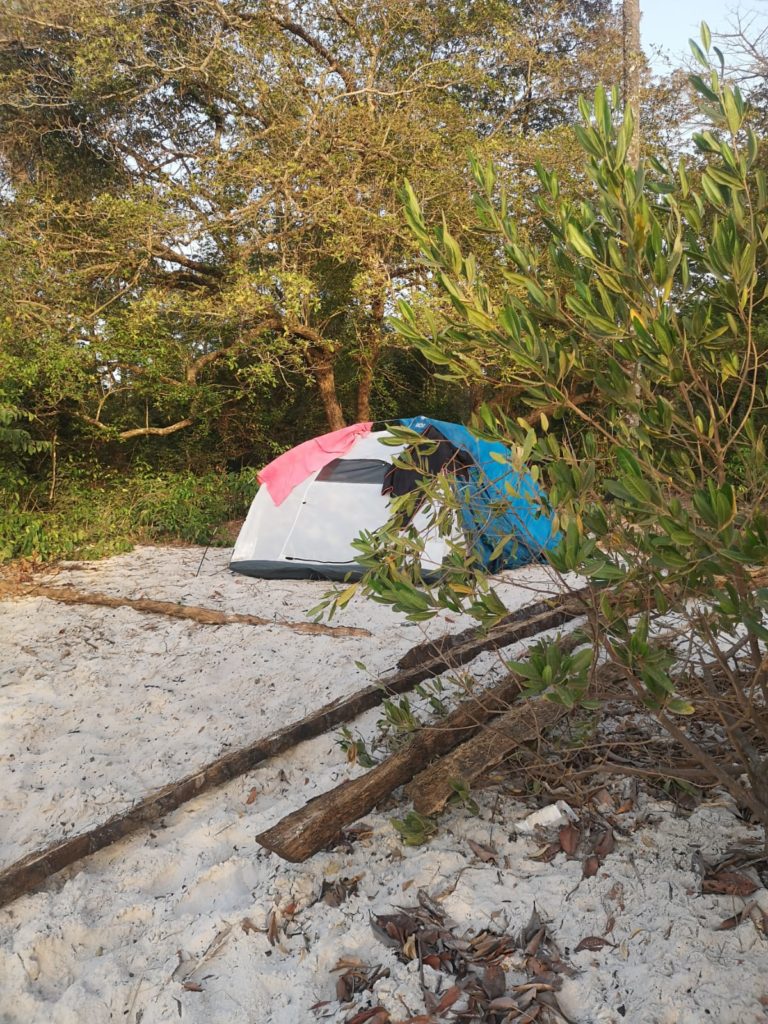
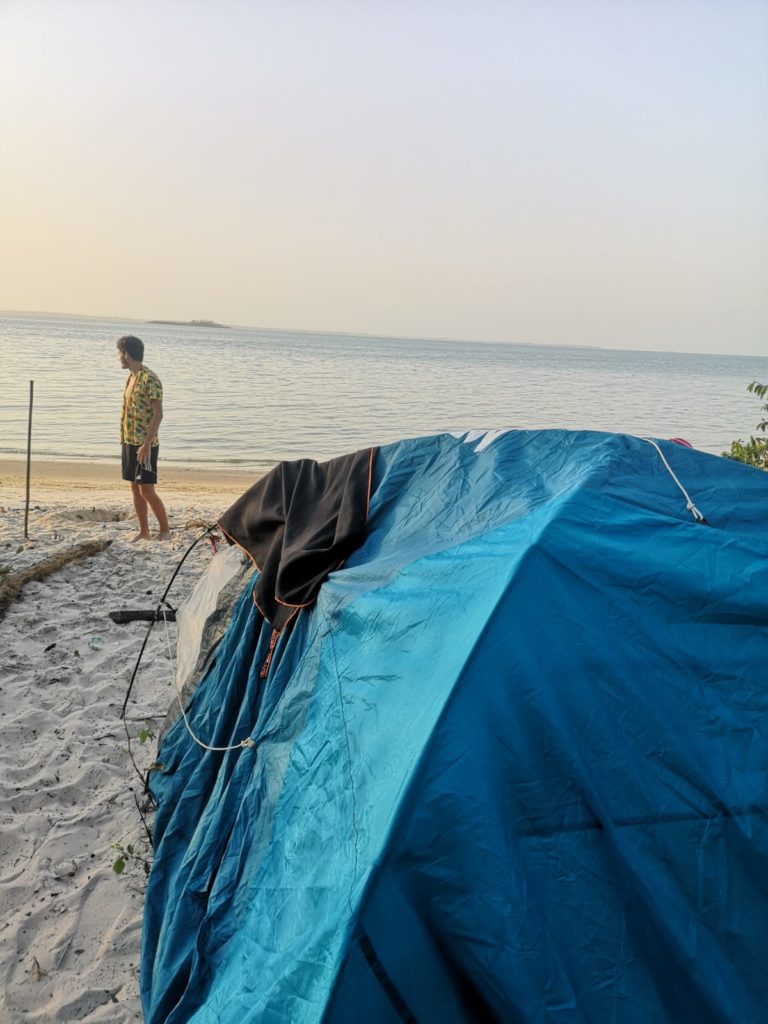
Objective of the day: enjoy the beach!
And we took advantage of it.
With the falling tide, many sandbanks with various colors appear as they go. We had left the tent, the bag and took with us a little one with our sensitive belongings (phone, wallet, passport)
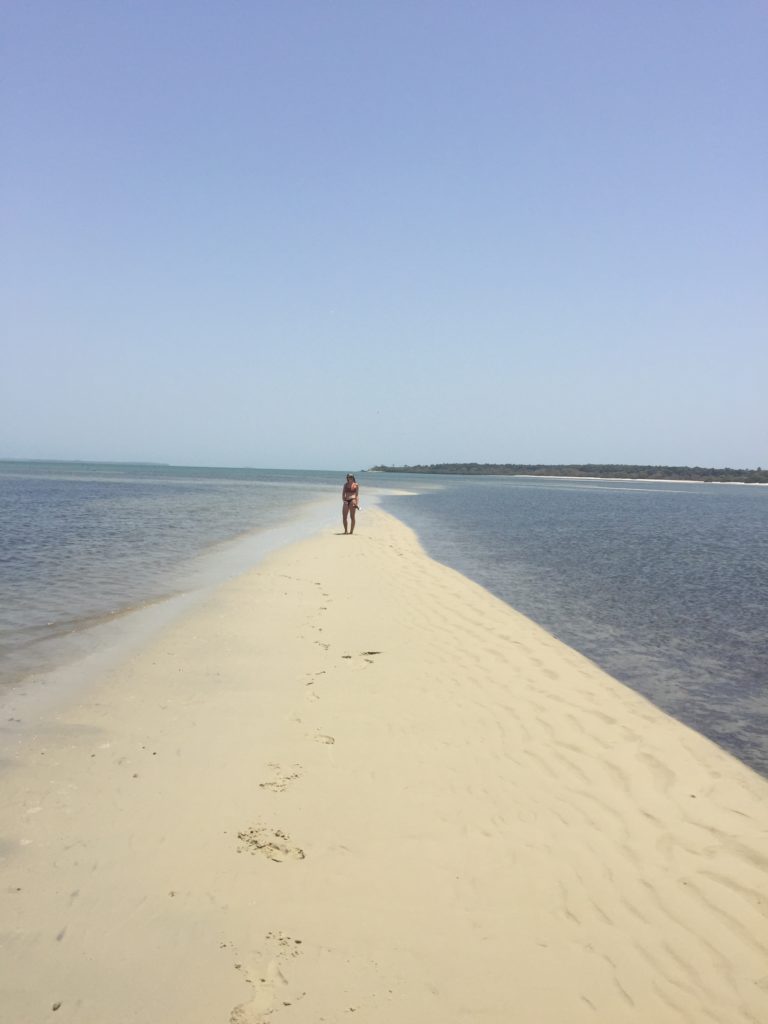
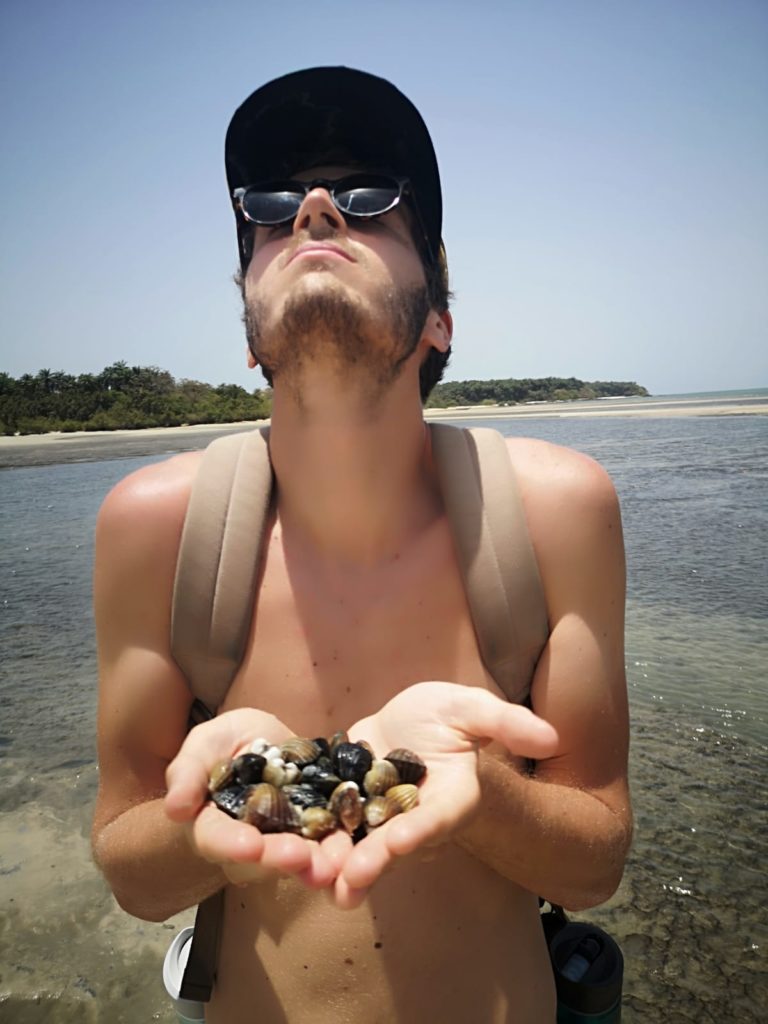
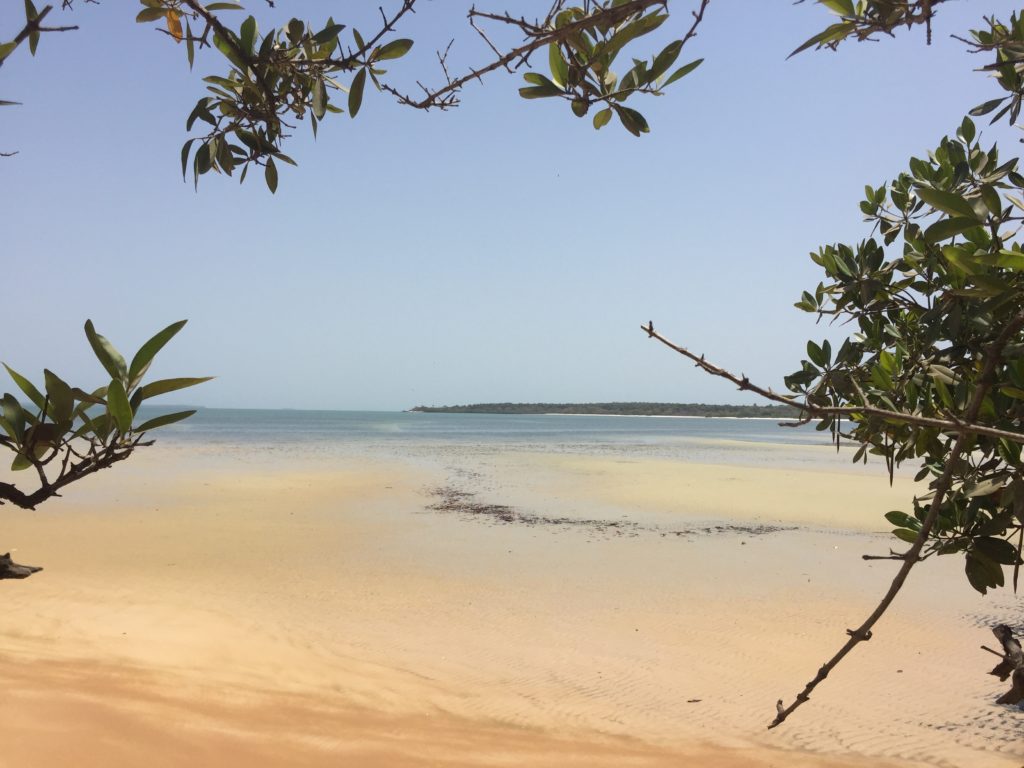
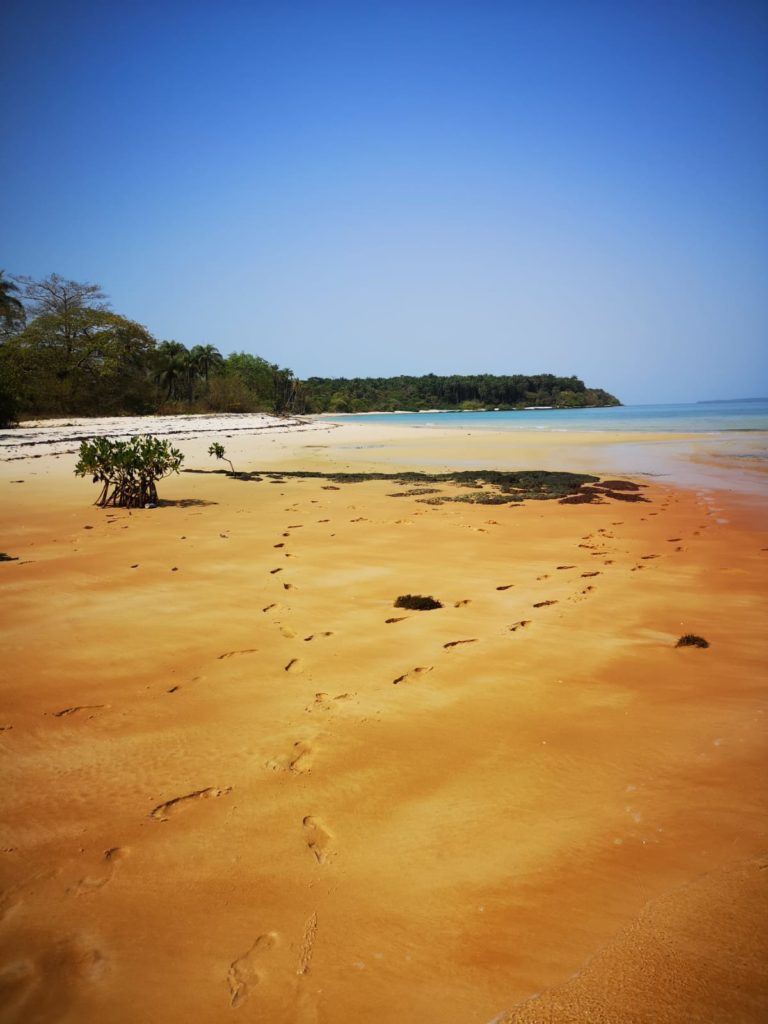
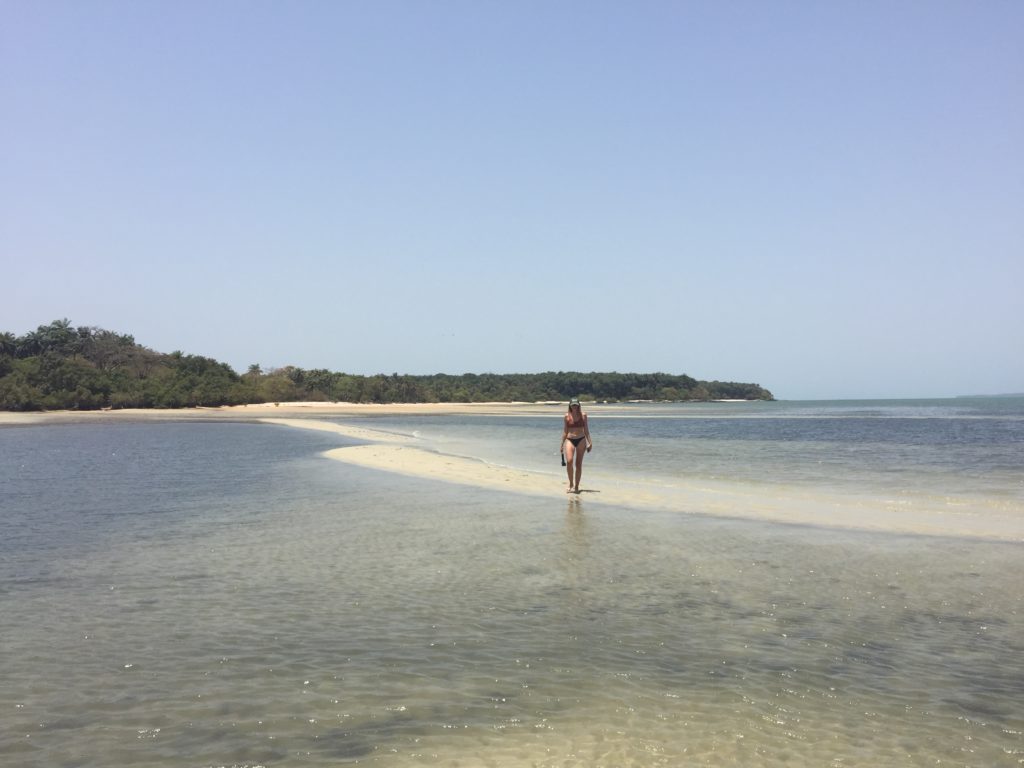
The best is yet to come
For the rest of the afternoon, we picked up some fresh shells and asked the village of Ancanho if we could cook them.
The village chief invited us to eat with him and take water from the well with our LifeStraw (–> see in the video at the beginning).
And here the best happens… a dough dish arrives with meat.
Out of politeness we do not refuse and we eat with it in the same dish.
After a few good forks we ask what meat is…
And we were there, we were eating the famous Djikindor (Ziguindor).
The wild rat so prized by the inhabitants of the Bijagos Islands…
As much to tell you that it was rather good even if we left most of it to the village chief and his friend.
Then we thanked everyone and continued to visit the seaside.
The night with the Ziguindor
The canoe of the return was scheduled for Friday morning early so we spent a 2nd night on the beach of Ancanho.
And the night was hectic. Many hunters of Ziguindor hunt and sleep around the beach to sell the next day the Ziguindor on Bubaque.
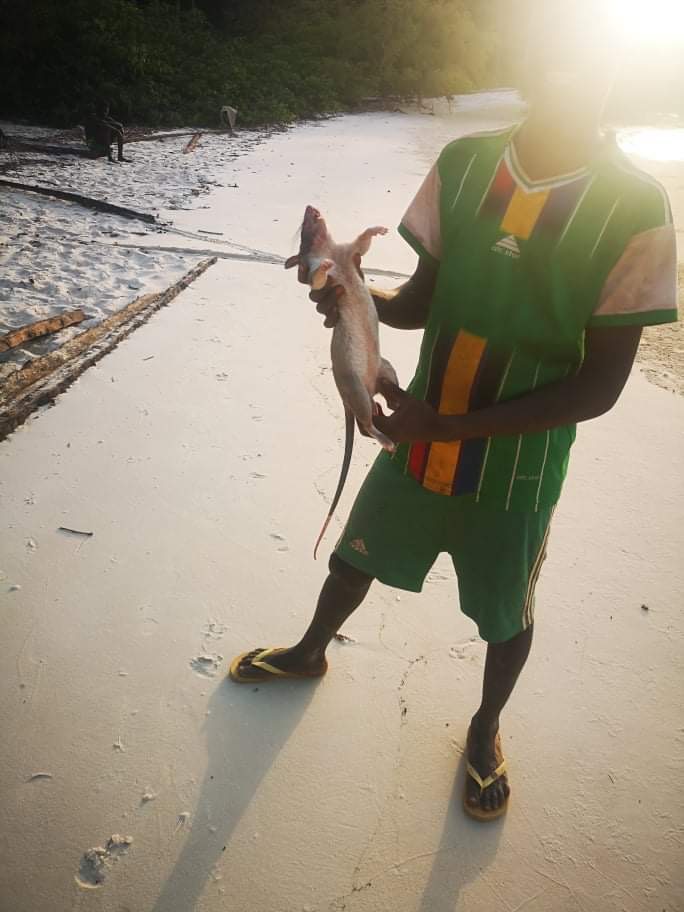
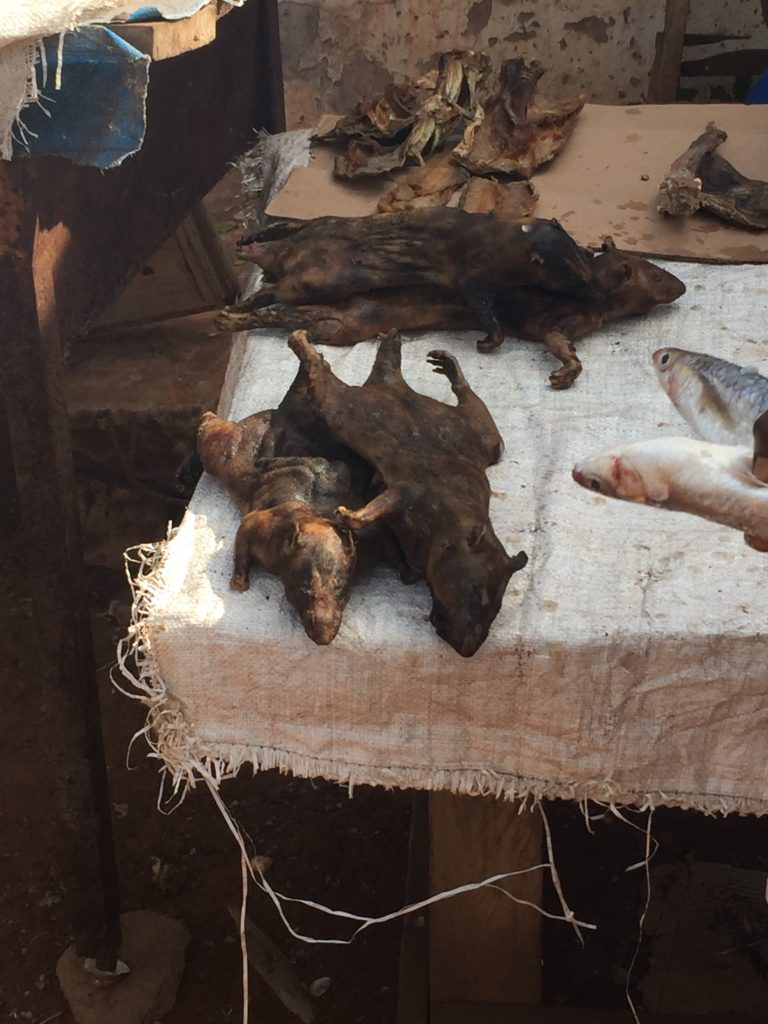
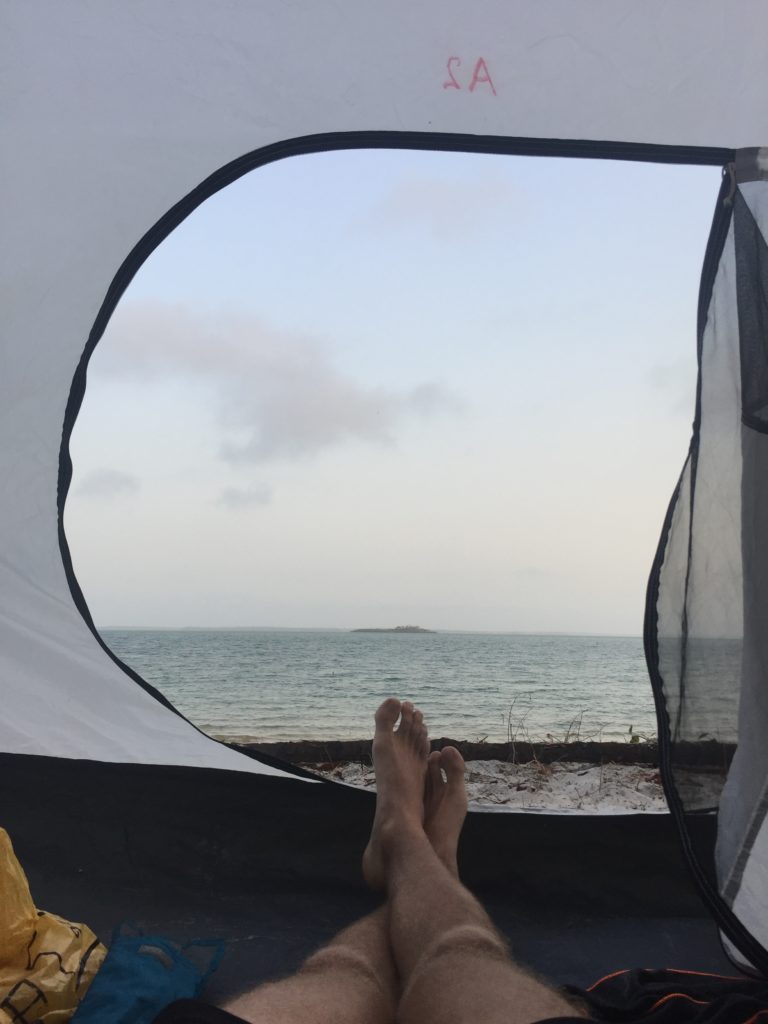
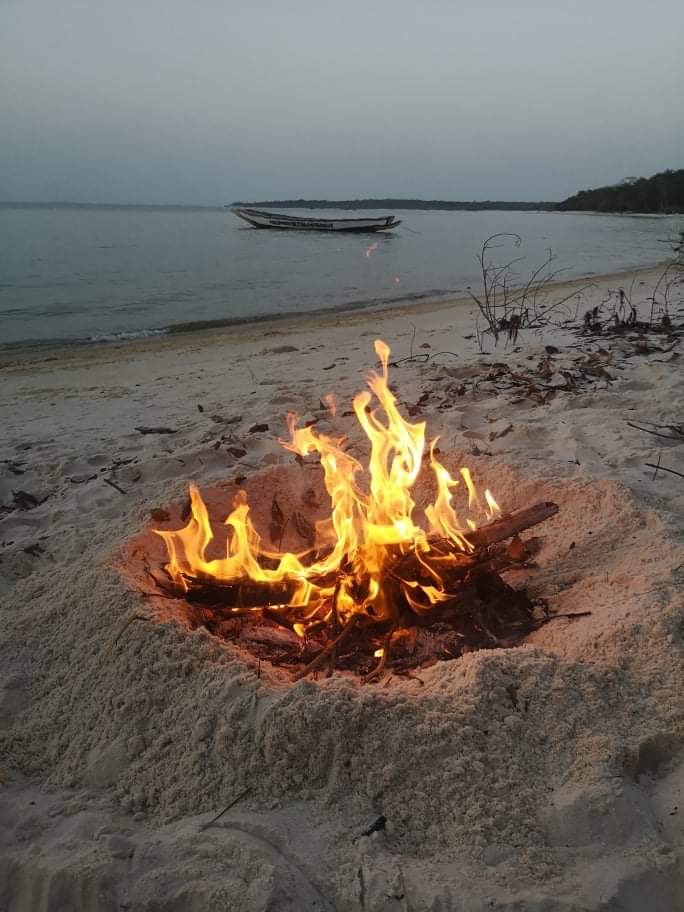
We were surrounded by Ziguindor butchered, in the canoe of the return.
It was an unforgettable experience that I hope you can experience
The continuation of the adventure in Casamance in Senegal
We spent one last night then in Bubaque and price the ferry back to Bissau.
A last night in Bissau also before taking a public transport to the bus station towards Mpal and Ziguinchor.
Then, we spent a few days in Casamance and especially at the Palmerais des Robinsons with the giant otter as a guard dog.
All the things to do in Casamance are in our articles from the Road Trip Senegal – Casamance & Pays Bassari
- Bissau, the quiet capital of Guinea-Bissau
- The wonderful Bijagos Archipelago and its main island of Bubaque
- Wild camping on the island of Canhabaque in the Bijagos Islands
Reminder of some tips
- Budget: for 2 weeks we spent about 500€ all inclusive per person. Depending on your activities or the accommodations you will take it can go up to 1000 €. there is something for every budget.
- Time: to enjoy well it takes about 10 days. Especially because for the Bijagos Islands there are no departures every day and in Guinea-Bissau the journeys are very long.
- Currency: For information, 10 000 FCFA = 15€ // 600 FCFA = 1€. In Guinea Bissau, CFA francs are used so you will be quiet if you come from Senegal! Otherwise you will have many banks in Bissau but on the Bijagos archipelago few ways to withdraw cash. (a person makes money transfers to an account in the UK, we have not tested but it is better to avoid I think).
- Temperature: IT’S HOT but it’s tenable remember to buy water and bring Lifestraw if possible to troubleshoot.
- Wifi/Infrastructure: the country has poor infrastructure in general, wifi is not the best and not available everywhere. To have some (Bissau: Restaurant Kalliste, Bubaque: Mango Lodge). For the internet, we advise you to take a card in Bissau –> Between 500 FCFA and 1000 FCFA for first prices to receive at least calls.
- In my suitcase I have … : Mosquito repellent, a Decathlon “meat bag”, summer stuff, glasses cap, sunscreen, a headlamp, a Lifestraw
If you liked or have other tips to share feel free to comment on the article or join the facebook page or follow us on Instagram @jeanmichelvoyage